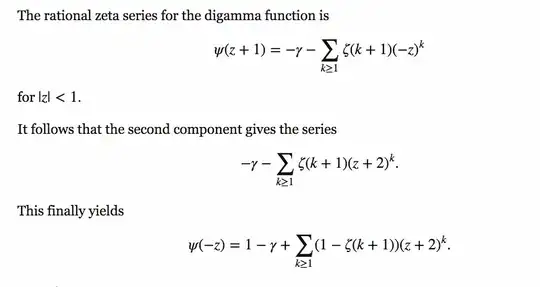
I dont see the transition from $(-z)^k$ in the fist sum to the transition to $(z+2)^k$ in the second sum?
How is that derived?

I dont see the transition from $(-z)^k$ in the fist sum to the transition to $(z+2)^k$ in the second sum?
How is that derived?
From $$\psi(1-z)=-\gamma-\sum_{k\geq 1}\zeta(k+1) z^{k} $$ and $\psi(2-z)=\psi(1-z)+\frac{1}{1-z}$ it follows that: $$\psi(2-z) = \frac{1}{1-z}-\gamma-\sum_{k\geq 1}\zeta(k+1) z^{k}=(1-\gamma)+\sum_{k\geq 1}(1-\zeta(k+1))\,z^k\tag{1}$$ now replace $z$ with $z+2$ to get the stated identity.